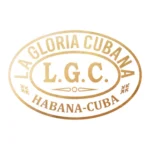CUBAN BRANDS
Cuban cigars have always been incredibly sought-after and today, with these cigars in even shorter supply, demand has never been greater. In order to determine what makes these cigars so iconic, it’s important to take a look back at their rich history.
Although the origin of the cigar as we know it today is often associated with Christopher Columbus and his exploits in the Americas, it can be traced back much earlier — to the Mayan era, in fact. As with most herbal commodities, the initial cigar was supposed to contain medicinal qualities which the ancient Aztecs and Mayans would utilise for mental and spiritual well-being and betterment. The ‘sikar’, as it was referred to those thousands of years ago, would also be used as an offering to the Gods in addition to recreational and leisurely pursuits. While it wouldn’t take very long for modern man to realize there were no true medicinal benefits, the practice of smoking cigars would continue on for centuries, eventually leading to its discovery by Columbus and subsequent introduction into Spain, Europe and the rest of the world.
Hispaniola (present day Haiti, the Dominican Republic, and Cuba) was where the explorer discovered the sikar in the 15th century, after he witnessed locals smoking dried tobacco leaves that were wrapped in plantain leaves. The Spanish Conquistadors became used to this local custom and began exporting the dried leaves to the Old World. It was only a little while later when they realized there was significant benefit to rolling the tobacco locally before it travelled overseas: this process ensured the quality would remain for much longer compared to transporting the leaves first and then rolling in Spain. As with the majority of exotic ‘imports’ in those days, the Europeans deemed cigars as a status symbol associated with the upper echelons of high society luxury. They represented worldliness and above all else, wealth. There was also a certain prestige and artisanship with smoking a Havana cigar, as opposed to a locally-rolled one.
Cuba in particular was best placed to reap the biggest benefits of exportation, as the land was already ripe with the best quality tobacco leaves. It kick-started the island’s long-standing love affair, with a host of cigar-making factories and manufacturing plants erected to facilitate local and international demand. By the 1700s, tobacco overtook sugar as the country’s biggest export, and by the mid-1800s, Cuba had entered the golden era of tobacco making — birthing over 10,000 plantations and seeing the emergence of some of the most famous cigar brands in the world. This boom in manufacture resulted in cigar production becoming an essential livelihood for the local communities, providing income and revolutionizing the country’s lifestyle and international status. So who were, and are, the key players in the Cuban tobacco industry?
Today, some of the finest brands still in production happen to be some of the oldest that lived through pre-Revolution, nationalization, the collapse of the Soviet Union as well as brighter periods in Cuba’s dotted history. Por Larrañaga, Partagás, Ramón Allones, El Rey del Mundo, Punch and H. Upmann were all founded between 1834 and 1848, the latter three incidentally by German businessmen. Hoyo de Monterrey came in 1865, with Romeo y Julieta following ten years later. A handful of now-famous brands would launch in the 1900s including Bolivar, Montecristo, Cohiba and Trinidad. There are various reasons, beyond simply the tobacco itself, behind the success and longevity of all of these cigar brands. Marketing, brand perception association and recall would play key roles in the international reputation of these cigars, particularly the younger ones. Cohiba, for example, grew cult status through the image and association with Cuban leader Fidel Castro, whilst on the other side of the pond, Romeo y Julietas were championed by a certain Sir Winston Churchill. The flagship vitola of the Romeo y Julieta brand was named in honour of their most famous customer, and continues to be some of the most popular cigars in their repertoire. However, the smart brand positioning — it was named after Shakespeare’s famous play, Romeo and Juliet, and inspired by factory workers who enjoyed listening to the play whilst on the job — and incredible salesmanship notably from José ‘Pepin’ Fernández, Romeo y Julieta quickly became one of the most internationally renowned cigar brands and it still remains as such. Whilst some brands built a reputation on wholesome storytelling and an admirable charm offensive, others such as Partagás drew fame and attention through more unconventional methods.
Don Jaime Partagas y Ravelo found significant success as the owner of his eponymous brand, having worked in the tobacco world from the tender age of 14. He was, in fact, the first factory owner to have someone read to his employees as they worked, and is widely attributed as being the first to experiment with cigar fermentation and ageing methods to increase production and preserve quality. However, as time would go, Jaime would spend the majority of his fortune on one of his biggest vices — women. His womanising, and many legal battles, made him a prime target throughout the industry. He was also accused of attempting to steal the Cabañas name — a well-established brand founded in 1797 which continued in its operations until it was discontinued by Castro in 1962. Towards the tail end of the 1800s, Don Jaime’s luck ran out and he was murdered on one of his own plantations.
Sharing Don Jaime’s protocol of reading to employees, there was another incredibly famous brand in addition to Romeo y Julieta that took its name from a famous piece of literature. Montecristo was established in 1935, and named after Alexandre Dumas’s The Count of Monte Cristo, 1845. The book is based on the story of Dantés, who was falsely accused of treason and seeks revenge against his enemies. It was another favourite for torcedores who would listen to the story whilst working on the creation of their cigars. The beauty of these cigars was also down to its location, and process – something that was championed by the world’s oldest Cuban cigar brand still in operation.
From passion, love and murder to more, let’s say, lighthearted origin stories, Por Larrañaga is currently the oldest Cuban brand still making cigars. Ironically, whilst they are the oldest, they were the first Habano brand to use machinery in their factories, with an aim to revolutionise how cigars were made and ensure a near-perfect consistency whilst producing significantly faster and bigger. Naturally, the industrialisation of this artisanal process wasn’t warmly welcomed, especially at a time of labour unrest, with many rollers eventually going on strike. Today, however, this reputation for quality and consistency remains, their tobacco continues to be grown in Cuba’s Vuelta Abajo region — arguably the best place in the world for tobacco plantations — and the cigars are hand-rolled by the finest artisans. The quality of the cigars by Montecristo and Por Larrañaga remained until one of the youngest manufacturers fast became the marquee brand in the category.
Cohiba is arguably the most famous cigar brand in the world today. It’s easy, then, to assume that it had been operating from the beginning of the Golden Era of the 1800s. However, Cohiba was established shortly after Fidel Castro’s nationalisation. A story of legend, it is said that Castro sampled a cigar one of his bodyguards was smoking, completely by chance. Upon tasting how wonderfully balanced and aromatic it was, as well as how the cigars were constructed, he immediately summoned the artisan responsible — Eduardo Ribera. A local and abandoned villa was turned into a makeshift factory and Ribera was responsible for training a group of torcedores on his practises which included rolling fine tobacco leaves and barrel ageing processes. The villa is now the mecca of cigar production — El Laguito — and it still produces some of the finest cigars known to man. Although the brand was officially established in 1966, Cohiba cigars were made exclusively for Castro, and on the odd occasion, gifted by Castro to other senior officials and heads of states. Eventually, in 1982, a curation of Cohiba cigars were finally released to the general public in Madrid, Spain.
The word cohiba is derived from the Taino language, and means tobacco. Not only is the brand teeming with a history worth sharing a cigar over, the tobacco itself is grown in the world famous Pinar del Rio. To date, nobody knows where the farms (or vegas, as they are referred to) are actually located, and it remains one of Habanos’ best kept secrets. Due to the development in production and strict requirements of Cuban production, there are certain measures that need to be met in order for a Cohiba cigar to make the grade, and on top of this, only the most-skilled torcedores are appointed to wrap a Cohiba cigar. It’s precisely why they remain so sought-after, and are in shorter and shorter supply.
Today, Cuba resumes its mantle as a major producer of premium cigars, in competition with the Dominican Republic and Honduras. However, the quality and character of Cuban cigars is undeniable, which makes them such an in-demand commodity today. We pride ourselves in sourcing and selling the finest Cuban cigars, of which you can shop here.



























